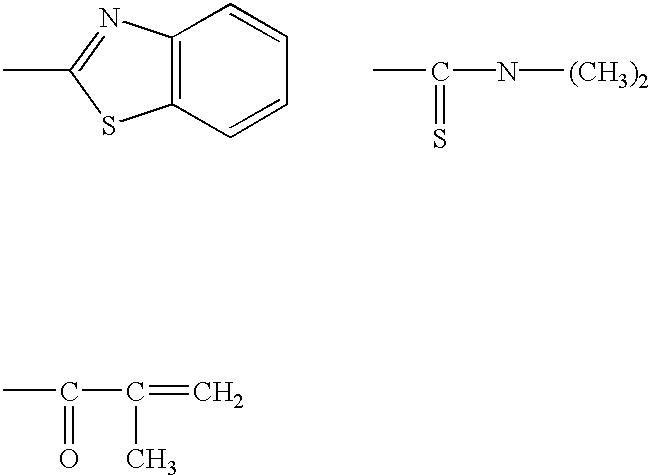Low rolling resistance tire for vehicles having a composite tread
a composite tread and low rolling resistance technology, applied in the field of low rolling resistance tires for vehicles having a composite tread, can solve the problems of affecting, particularly difficult to achieve objects, and worsening of the comfort characteristics of tires
- Summary
- Abstract
- Description
- Claims
- Application Information
AI Technical Summary
Benefits of technology
Problems solved by technology
Method used
Image
Examples
example 2
Invention
A rubber composition having the composition shown in the following Table I was obtained according to the procedure described in preceding Example 1.
Among the ingredients employed, also the following additional ingredients were used in addition to those already described with reference to the rubber composition of the radially inner layer of Example 1:
Kevlar.RTM.-pulp=short fibrillated aramid fibers dispersed in a polymeric matrix of natural rubber (fiber percentage=23% by weight).
examples 3-6
Comparison
Four comparative rubber compositions were prepared according to the procedure already described in preceding Example 1.
Among the ingredients employed, also the following additional ingredients were used in addition to those already described with reference to the rubber composition of the radially inner layer of Example 1:
E-SBR 1712=emulsion-prepared butadiene-styrene copolymer, available on the market under the trade name of EUROPRENE.TM. 1712 (Enichem).
The composition of such rubber compositions is reported in the following Table 1.
examples 7-8
Comparison
According to the preparation methods described in U.S. Pat. 4,319,619, two rubber compositions were prepared for the radially inner layer of the tread according to Examples 1 and, respectively, 3 of said patent.
Among the ingredients employed, also the following additional ingredients were used in addition to those already described with reference to the rubber composition of the radially inner layer of Example 1:
E-SBR 1500=emulsion-prepared butadiene-styrene copolymer, available on the market under the trade name of EUROPRENE.TM.1500 (Enichem).
The composition of the so obtained rubber compositions is reported in the following Table II.
PUM
| Property | Measurement | Unit |
|---|---|---|
| running temperature | aaaaa | aaaaa |
| thickness | aaaaa | aaaaa |
| thickness | aaaaa | aaaaa |
Abstract
Description
Claims
Application Information
 Login to View More
Login to View More - R&D
- Intellectual Property
- Life Sciences
- Materials
- Tech Scout
- Unparalleled Data Quality
- Higher Quality Content
- 60% Fewer Hallucinations
Browse by: Latest US Patents, China's latest patents, Technical Efficacy Thesaurus, Application Domain, Technology Topic, Popular Technical Reports.
© 2025 PatSnap. All rights reserved.Legal|Privacy policy|Modern Slavery Act Transparency Statement|Sitemap|About US| Contact US: help@patsnap.com



